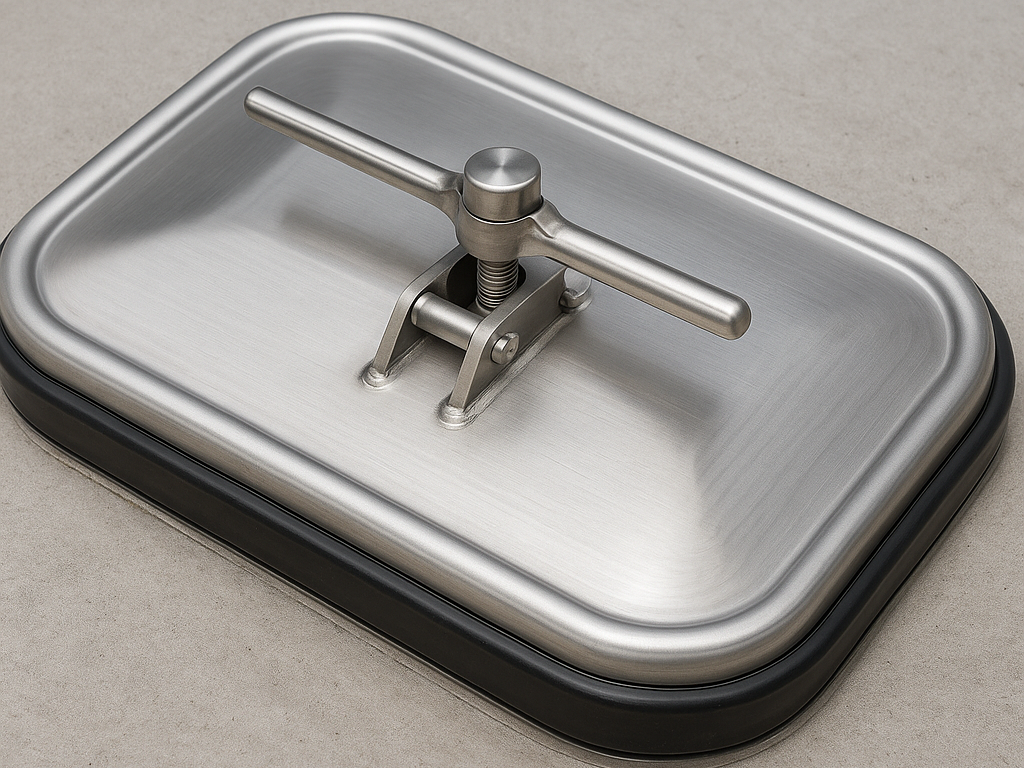Choosing the right manway gaskets isn’t just about size. It’s about keeping your tank sealed, your product safe, and your operations running without interruption. Here’s how to pick the right gasket for your stainless steel vessel without guessing.
Why manway gaskets matter in stainless steel tanks?
Manway gaskets don’t get much attention—until something goes wrong. A poor seal can lead to leaks, contamination, pressure loss, or unexpected downtime. In food, beverage, and chemical production, that’s not just inconvenient. It’s expensive.
The right gasket ensures your tank stays sealed, clean, and operational. It handles pressure, temperature, cleaning chemicals, and whatever product is inside the vessel. That’s why gasket selection isn’t just about size—it’s about performance.
What to check before choosing a new manway gasket?
Before you reorder what you’ve always used, it’s worth asking a few basic questions. Not all gaskets fit every manway. Not all materials handle the same conditions. And not every option will pass hygiene audits.
Start by checking how the tank is used: what goes inside, at what temperature, and how often the tank is cleaned. From there, consider size, material, and the type of manway closure—whether it’s DIN, SMS, or a custom design.
Gasket compatibility with product type and temperature
If you’re dealing with dairy, juice, beer or chemicals, the gasket must handle direct contact with those substances—without swelling, breaking down, or leaching anything into the product.
Also, think about process temperature. Some gaskets work fine up to 80°C, others up to 200°C. Using the wrong one may result in leaks during CIP or when the tank is under pressure. Thermal resistance and chemical compatibility charts from the supplier can help here.
Gasket size, shape and manway standards
Not all manways are the same, even if they look similar. Gaskets must match the lid and frame exactly—down to the millimeter. DIN and SMS manways have different groove depths and diameters. A mismatch here leads to leaks or crushed gaskets.
Always confirm the standard of the manway, the outer and inner diameter of the gasket, and the type of seal required: flat, lip, round or profile. Don’t guess—measure or check documentation.
Cleaning, maintenance and replacement cycles
If your process involves frequent cleaning with caustic or acidic solutions, your gaskets need to survive that. Some materials degrade faster than others and require more frequent replacement.
Have a plan for how often gaskets are inspected and replaced. Visual cracks, hardening, or loss of elasticity are clear signs it’s time for a new one. Better to replace too early than deal with a product recall or lost batch.
EPDM, silicone, PTFE – which material to choose?
Each material has its strengths. EPDM is widely used, affordable, and performs well in most food and beverage applications. It handles steam and cleaning agents, but not oils or fats. Silicone is softer, more elastic, and works in high temperatures—good for dry applications. PTFE (Teflon) is highly chemical-resistant and non-stick but less flexible.
The best choice depends on your process. Ask your supplier for chemical compatibility and temperature resistance data before ordering.
FDA and EU food-grade compliance – when it’s a must
In food and pharma production, not just any gasket will do. Materials need to meet FDA 21 CFR or EU 1935/2004 regulations. This ensures they won’t contaminate the product and are safe for repeated contact.
Always ask for certification or documentation. If you’re audited, you’ll need proof. Don’t rely on verbal confirmation—get it in writing.
How to avoid leaks during installation
Even the best gasket will fail if installed incorrectly. Make sure the sealing surface is clean, the gasket sits flat, and the manway is closed evenly. Avoid overtightening—it can deform the gasket and reduce its lifespan.
Lubricants approved for food use can help with installation. Also, never reuse a gasket that has been compressed for too long—it won’t spring back properly.
Why working with a reliable gasket supplier pays off
A trusted supplier knows their products—and your industry. They can advise on compatibility, offer custom sizes, and keep stock ready for quick delivery. That saves you time, prevents mistakes, and reduces costly downtime.
Instead of chasing cheap alternatives, invest in proven materials from a supplier who backs up their claims. It’s not just a gasket—it’s part of your process reliability.
Admin Recommended
Garden Tips for Decoradhouse: Transform Your Outdoor Space
Garden Tips for Decoradhouse: Transform Your Outdoor Space
Discover the Elegance of Luxury Villas in Italy with Le Collectionist
KDArchitects Landscape Ideas by Roger Morph


















